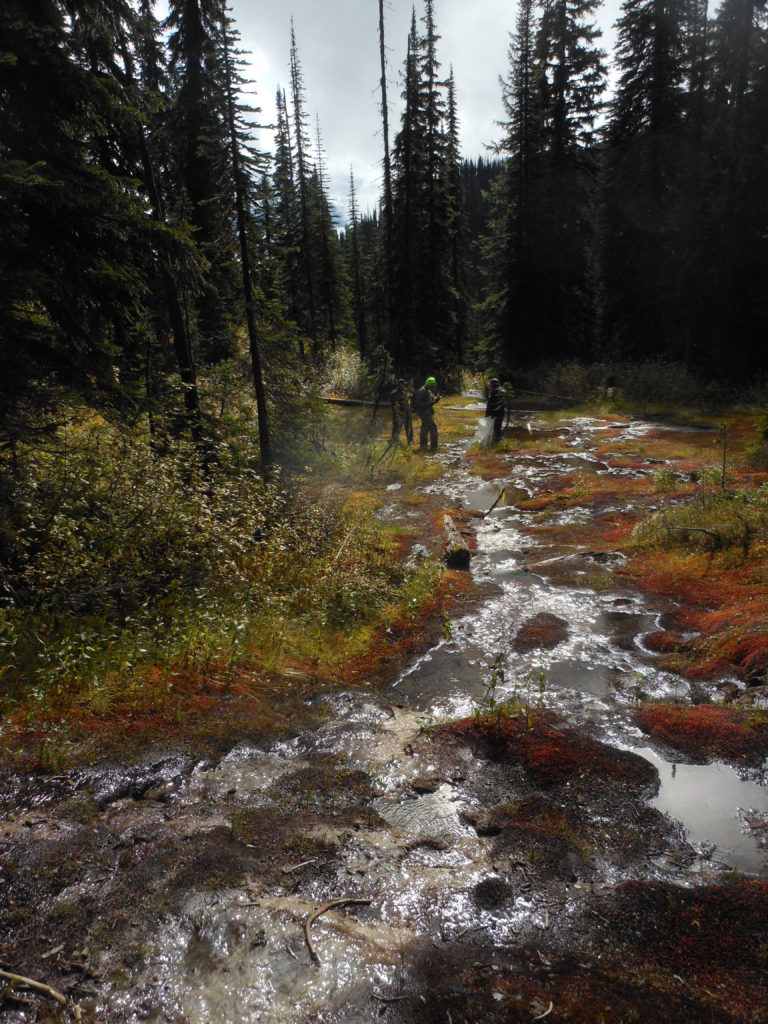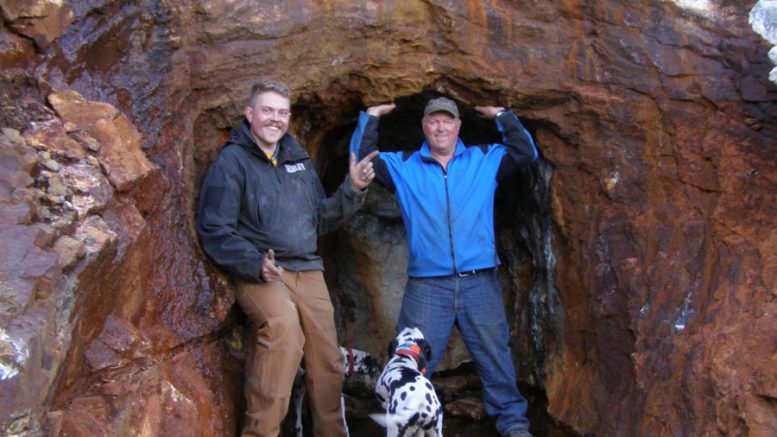The recent receipt of an Environmental Management Act (EMA) permit allowing explorer Taranis Resources (TSXV: TRO; US-OTC: TNREF) to undertake a bulk sample at its Thor polymetallic project in British Columbia is a bitter-sweet victory, president and CEO John Gardiner tells The Northern Miner.
The August issued permit follows the July issuance by the Energy, Mines, and Low-Carbon Innovation (EMLI) ministry of a Mines Act permit approving the 10,000-tonne bulk sample plan submitted initially by Taranis in 2018.
The Mines Act permit is the principal authorization required for Taranis to execute bulk sampling activities. The permit has a duration of five years, and Taranis has already paid a portion of the reclamation bond to EMLI to commence site stability investigations this summer.
Similarly, the EMA permit concludes the permitting phase for the bulk sample. But to get it, the company had to jump through regulatory hoops that led nowhere.
According to Gardiner, a bulk sample is a valuable and indispensable exploration-level tool – and in many cases, it is required to assess deposits for their geological and economic viability.
He says the B.C. government made sweeping changes to the Mining Act following the 2014 Mt Polley disaster.
“Unknown to many exploration companies, bulk samples got swept under the rug in B.C. following the Mt Polley incident,” Gardiner says in an interview. “Essentially, the government legislated them out of existence because bulk samples could be construed as ‘mining.’”
“If you told a doctor that his CAT-scan machine was going to be legislated out of existence, how do you think the doctor would react? More importantly, how do you think the patients would fare?
“I can guarantee you that there would be many failures to diagnose critical disease – and with the ‘removal’ of bulk sampling, the determination of whether a mineral deposit is economical or not would suffer in the geological perspective,” he says.

Historical mining activity at Thor encountered considerable challenges, given its location in the heart of the Kootenays. Credit: Taranis Resources.
Unfortunately for Taranis – a budding explorer holding a 100% interest in the Thor silver, gold, zinc, lead, and copper deposit near Trout Lake in southeastern B.C. – the company had to not only navigate permitting a bulk sample, but it also had to convince the B.C. government of the undertaking.
In the process, “Taranis single-handedly forced the government to write ‘new’ regulations and make them public earlier this year,” Gardiner says. “It acted as an agent of change to benefit all prospectors, explorers, and miners in B.C.”
“In our case, it involved the independent B.C. Ombudsperson to examine how bulk sampling was effectively destroyed in the province by essentially knee-jerk government reaction to an industry incident, requiring the Ombudsperson to compel the government to follow its own regulations.
“As all exploration is governed by legislation at the provincial level – exploration companies need to be made aware that government can be influenced when a critical mistake is made at the regulatory level, and corrective actions made,” says Gardiner.
Taranis’ trouble started in 2015 when the board approved undertaking a bulk sample at Thor to understand the metallurgical recoveries of the deposit more fully. The decision was made to apply for a bulk sample permit with Energy, Mines and Petroleum Resources – now called EMLI.
The purpose of the bulk sampling was several-fold. It included better understanding the metallurgical recoveries, the grade (quality) of the resource, and testing for the presence of several other elements that occur in the deposit of potential economic interest (antimony, indium, tin, gallium, among others) that had not been analyzed systematically through drilling.

Prospective lands at Thor waiting to be assessed for its economic potential. Credit: Taranis Resources.
Gardiner explains that previous metallurgical testing had shown that all the metals of economic interest were recoverable using gravity separation through a Gekko-IPJ (InLineProcessing Jig) plant. The test material source would be from two existing brownfield open-pits and from previous dump sampling that had been shown as representative of the main Thor deposit.
As such, it provided an easily accessible source of material for a bulk sample that did not require any activities usually associated with mining, such as drilling and blasting.
The plan is simple. The material would be processed onsite through the Gekko plant and would produce a high-grade pre-concentrate onsite that could be shipped to a flotation plant in Montana for processing.
The company will collect detailed information during the sample processing to understand the nature of the ore at both the pre-concentration and concentration phases. The data would then be used in the feasibility study of the deposit. In addition, smelters that would process the concentrate generally insist on receiving large volumes of concentrate to test and formulate smelter contracts (in the hundreds of tonnes).
In 2015, Taranis contacted EMLI to discuss the process to obtain a bulk-sample at Thor. After a period of internal discussions, Taranis was informed that it would have to submit a Joint Environmental Mining Act application (JEMA) and an accompanying Information Requirements Table (IRT) for effluent discharge.
According to Gardiner, JEMAs were designed initially for ‘major mines’ permitting applications and were generally considered above the ability and expense a junior explorer could commonly afford.
“Generally, a JEMA is done after a feasibility study has been completed and the operator decides commercial production is warranted. It is not designed for exploration-level work,” says Gardiner.
Fast forward to mid-October 2018, Taranis submitted its JEMA (500 pages) to EMLI that included extensive details about how it planned to undertake the bulk sample. This JEMA included details such as hydrology, baseline water sampling, environmental characteristics of the material to be processed, details of the processing operation, coarse reject storage, among numerous other attributes.
“It addressed all of the information required to operate a full-scale commercial mining operation – albeit many of the items were not applicable, such as five-year reclamation plans,” says Gardiner.
In early August 2019, Taranis was notified that its JEMA/IRT had been accepted for technical review. Over the next two years, the project was subjected to the scrutiny of at least 28 different technical reviewers, with numerous meetings ostensibly leading to resolution.
According to Gardiner, Taranis was asked to complete additional reports on the project that included various site designs, biological field surveys, and facilities designs by qualified persons. These things objectively are the purview of advanced projects that have had positive bulk samples already completed.
Gardiner decries the period during the technical review that created significant regulatory uncertainty for the industry. It became apparent that Taranis was aiming at scoring a goal through regularly moving goalposts.
“The bulk sample was being subjected to ever-increasing demands for data such as invertebrate counts in streams, biological surveys to assess fish, etcetera, as well as some management issues,” he says. “It started to look like there might have been a policy in place to willfully obstruct any bulk sample permitting from reaching the finish line.”
Out of options and out of luck, Taranis contacted the B.C. Ombudsperson early in 2020 and asked them to examine its bulk sample permit application in the wake of the issues and delays.
In June of 2020, the Ombudsperson completed their investigation and created a resolution with two significant findings.
Firstly, the Ombudsperson finding stated there was no public policy in place to permit bulk samples in British Columbia other than the two-page Notice of Work sheet that was previously the only permitting required to undertake such samples.
Critically, the Ombudsperson discovered that Taranis had been subjected to a policy adopted by EMLI but not yet disseminated to the public. “This created the policy uncertainty,” says Gardiner.
Earlier this summer, EMLI published their bulk sampling policy as per the Ombudsperson’s resolution with Taranis, and it now provides much clearer policy guidelines.
Secondly, EMLI agreed to a timeline that would see the completion of the bulk sample permit application after the submission of several technical reports.
EMLI finally granted Taranis the bulk sampling permit for processing a 10,000-tonne bulk sample at Thor on July 26.

The Thor geological model demonstrates ample opportunity to confirm known mineralization and potentially expand the model. Credit: Taranis Resources.
The bulk sample has been designed to gather information critical to preparing a feasibility study and subsequent mine development. The sampling project will meticulously collect statistically representative data about the grade and quality of the mineral resource and determine the recovery rate of the gravity pre-concentration process, says Gardiner.
“The removal of legacy mineral stockpiles has the additional benefit of ameliorating un-reclaimed mining disturbances, which date back over 50 years,” says Gardiner.
The Northern Miner reached out to EMLI for comment but did not receive a response before this article went to print.
David Johnston, president of the Chamber of Mines of Eastern British Columbia, tells The Northern Miner that the problems Taranis had to deal with were not uncommon of the hardships the association’s membership experienced in general.
“For small to medium-sized companies and individuals, the time spent with permitting and costs of bonding plus conditional studies, amongst other requirements under the former regime, were making exploration for small to medium scale production nearly impossible,” he says in an interview.
“The lack of any permits for bulk samples for years in the province was a common observation.
“There is the perception of bias and a general feeling in the mining exploration community that many government employees in permitting offices have become deliberately obstructionist. While it is unlikely that any government would have that as a policy due to simple economics, many felt like it was happening,” says Johnston.
“It damaged B.C.’s reputation as a mining-friendly investment destination on the global stage.”


Good news story. Should be published in print edition of the Northern Miner.
Some writer could re-work the story for the general public showing what a miner has to do to get a permit to take a sample to establish the feasibility of a project.